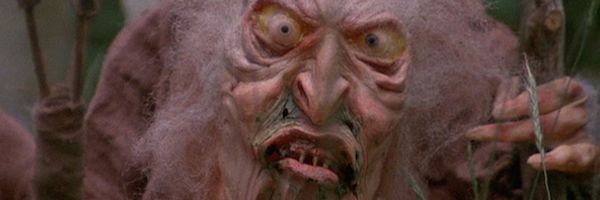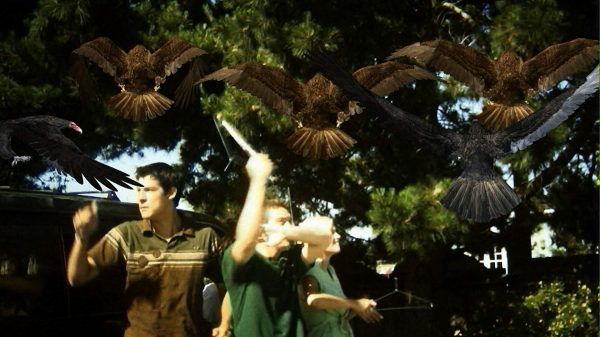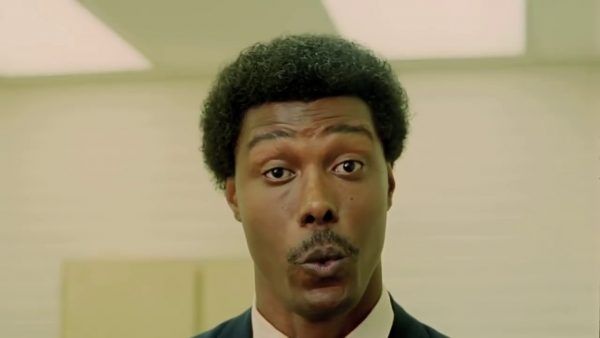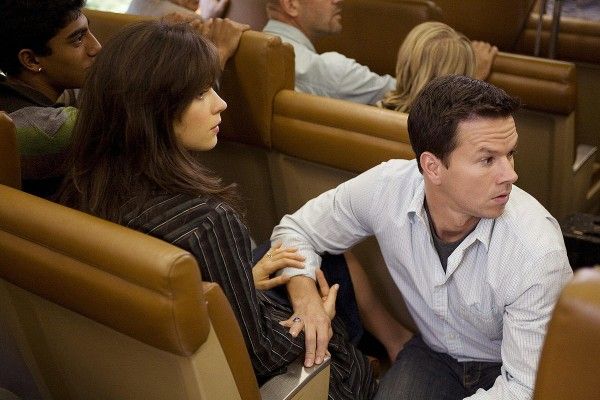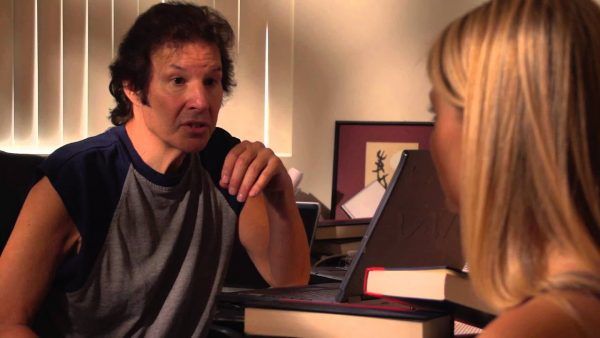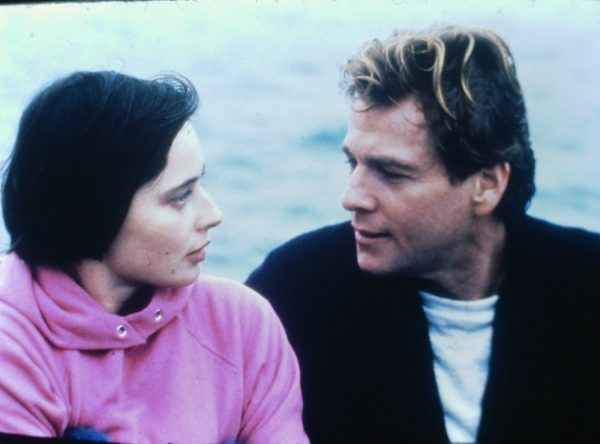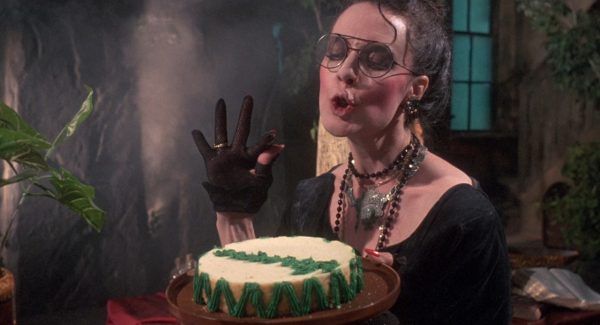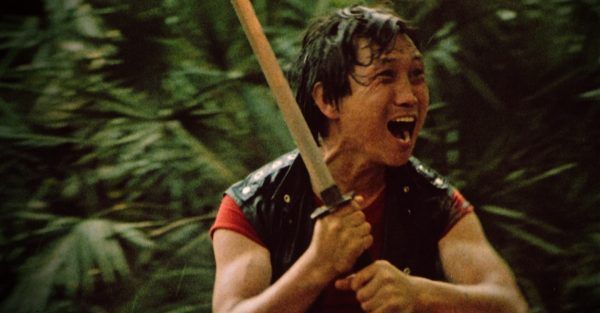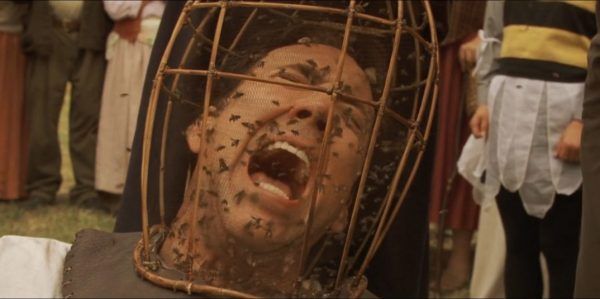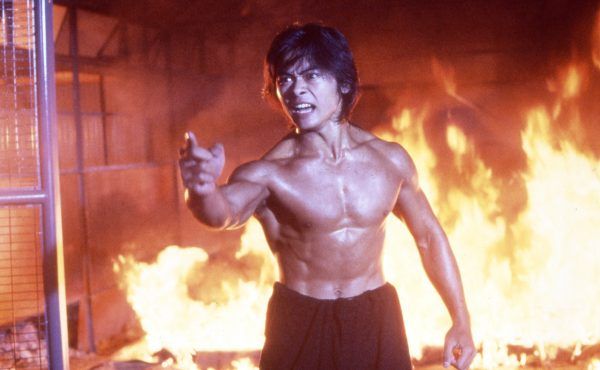What’s that? You only like watching “good movies”? Hmm. Interesting. I respectfully disagree, but interesting.
You see, I’m a sucker for what you might call “bad movies.” Movies that by no conventional metric are of quality, but manage to reach a new height of entertainment value that seems to vibrate on a separate plane of existence. Movies that buck any kind of measure of effectiveness, inventing their own new rules and filmmaking vocabularies. Movies that prove our puny definitions of “talent” and “craft” are arbitrary, coming in distant places to the winning effectiveness of “making something no matter what.” Movies that are so bad… they’re good.
These types of flicks are catnip for folks looking to kick bad with a group of rowdy friends and laugh their dang butts off, commenting on the lack of finesse on display while earnestly vibing with the genuine joy they’re receiving. And if you want this infectious experience, popularized by shows like Mystery Science Theater 3000, we’ve got 10 flicks that’ll scratch that itch and thensome. However: If you’re at least somewhat familiar with the phenomenon of “so bad they’re good movies,” you’re probably at least somewhat familiar with The Room, the Tommy Wiseau cult classic that became a cross-country sensation and inspired a real-ass movie with the Francos called The Disaster Artist. Long story short: The Room is perfect, go watch it, have a blast. But if you want to dig a little deeper, here are 10 of the best bad movies that aren’t The Room to tear you apart.
Birdemic: Shock and Terror
Director/Writer: James Nguyen
Cast: Alan Bagh, Whitney Moore, Janae Caster, Colton Osborne, Adam Sessa
My favorite mode of camp cinema is when a creator’s reach is overwhelmingly earnest. James Nguyen, the singular auteur behind Birdemic: Shock and Terror, wanted so much for his film to be a new horror classic, a sensitive love story, an environmental treatise, an action-packed blockbuster. As for Nguyen’s grasp… well, there’s not much of anything resembling “traditional filmmaking competence” being grasped at here. The footage is grainy and poorly lit, looking like a mini-DV nightmare. The effects verge on postmodern vaporware performance art -- Nguyen loops in what look like low-resolution gifs of birds “attacking” in climactic moments. The dialogue, despite being delivered by actors trying their level best, feels like aliens spent two hours on Earth and tried to write a “How Humans Speak” manual (especially scenes where anything involving work is discussed). The sound quality is bad, full-stop. However -- I am not here to shit on Nguyen’s work. All of these observations about the film are why I love it so dearly. It is such a unique, pure, unfiltered object. A testament to following a point of view through no matter what gets in the way. A necessary, experimental piece of the complicated film appreciation mode known as “auteur theory” (we talk a lot about when auteurs are conventionally “good,” but what about the auteurs who buck any and all “conventions” at their most molecular level?). And, in less pretentious language, it’s a gut-bustingly hilarious experience. Ultimately, Birdemic is the American Dream on film, a testament to what happens when you work hard and get shit done no matter what. Plus: it has one of the catchiest tunes ever put on celluloid. Sing it with me: Just hangin’ out, hangin’ out, hangin’ out with my family, havin’ ourselves a party.
Samurai Cop
Director/Writer: Amir Shervan
Cast: Robert Z'Dar, Matt Hannon, Mark Frazer, Gerald Okamura
One of the best times I’ve ever had in a movie theatre came from a chance repertory screening of Samurai Cop, a 1991 direct-to-video action flick from filmmaker Amir Shervan. Obviously, I am going to enjoy a film called Samurai Cop. I’m only human. But the sheer amount of joy derived from this screening, coupled with a sold-out crowd enjoying the hell out of it just as much as me, pumped my brain and veins with an almost unhealthy amount of endorphins (is that how endorphins work?). This film rises above the ranks of similar ‘90s DTV action shlock by sheer force of personality. Where so many other films about a renegade cop (Matt Hannon) trying to stop a gang (led by Robert Z’Dar) would suffice from placing the tropes and necessary plot pegs in the correspondent holes, Samurai Cop blows up the entire board. It’s a film full of glee and silliness despite Shervan’s seemingly deadly serious intentions. A film where our star and his love interest’s (Janis Farley) flirtatious banter are punctuated by aggressive, fourth-wall breaking mugs to the camera from Mark Frazer. Where a stuffed lion on a wall, despite being in the background, garners more attention and raucous laughter than most comedic performers. Where action scenes rise past their basic filmmaking incompetence to feel endearingly infectious. Samurai Cop is just a good-ass time -- but its sequel, Samurai Cop 2: Deadly Vengeance, made 24 years after the original, tends to fall into that tricky self-aware no-man’s land of “intentional camp cinema.” Stick with the OG.
The Happening
Director/Writer: M. Night Shyamalan
Cast: Mark Wahlberg, Zooey Deschanel, John Leguizamo, Betty Buckley
When folks ask me who some of my favorite contemporary film directors are (I go to some wild parties, y’all), I will invariably bring up M. Night Shyamalan, and this will invariably bring up some quizzical looks. His rise and fall and (depending on your opinions of his latest work) rise again is certainly one of the more curious paths in Hollywood, and I feel the folks I’m chatting with want to make sure I only mean “I like The Sixth Sense.” Nah, dude. Well, I mean, I do like The Sixth Sense -- and his “other good ones” like Unbreakable, Signs and Split. But I’m also here to tell everyone that The Happening, widely considered to be one of the director’s worst during his nadir period (also including The Lady in the Water, The Last Airbender, and After Earth), is actually one of his masterpieces. It is aggressively idiosyncratic in every facet of its construction, from the dialogue, to the performance choices, to the very strange cinematography, to the friggin’ choice of scares itself. Like Birdemic, The Happening wants to be an environmental warning couched in genre cinema tropes. Like Birdemic, Shyamalan’s method of communication is pitched on some level of existence I will never be able to visit. But unlike Birdemic, Shyamalan actually has the craft and the skills to combine his weird-ass impulses with impeccable craft and movie stars. These movie stars all seem to be performing under strict, bonkers guidelines, with Mark Wahlberg and Zooey Deschanel giving stiff, structured performances that seem to be in dialogue only with themselves (only John Leguizamo seems to be allowed to perform “naturally”). And Shyamalan’s level of craft applied to such strangeness results in a ton of comedy, even in its ostensible scares. Every single moment of this film feels choreographed and chosen within an inch of its life, and the result is something hypnotic, otherworldly, and masterful in its surreal silliness. Care for some lemonade?
Fateful Findings
Director/Writer: Neil Breen
Cast: Neil Breen, Jennifer Autry, Klara Landrat, Danielle Andrade
If Tommy Wiseau is The Beatles of “so-bad-it’s-good cinema,” a symbol that even folks not super plugged into that scene are aware of, Neil Breen is the indie band that only your coolest friends know about. Breen is an architect-turned-real-estate-agent-turned-filmmaker. He self-finances all of his movies, writes them, directs them, stars in them, edits them -- he literally works on his film’s craft services. Breen’s films are blood, sweat, and tears extensions of Breen the human -- and based on Fateful Findings, which just might be his masterpiece, Breen seems to be the personification of one of those YouTube conspiracy theory videos that untangle nearly in present tense as they make their incoherent case, revealing a creator desperate for any kind of connection. Fateful Findings begins with a simple enough genre premise -- Successful novelist Dylan (Breen, natch) has lived a life full of mystery, thanks to a magical stone he found when he was a child. But now he’s ready to write a tell-all book detailing not just the powers of this stone, but everything wrong with society, man. But his quest to unveil the truth is blindsided by a wife descending into madness, an underage step-daughter who constantly hits on him (!), a rekindled flame with a woman from his past who also found the stone (!!), a group of kidnappers desperate to stop Dylan from revealing the truth (!!!), psychic powers (!!!!), freaking ghosts (!!!!!), and a shockingly grisly, grimily hilarious ending that Ready or Not only wishes it could reach the heights of. Breen, very obviously, both craves and is repulsed by attention, especially from women, and feels personally slighted by all of society’s bullshit, despite not being able to fully articulate what that bullshit is. In other words: Why watch Joker when you can watch a movie made by the Joker that makes you laugh uncontrollably like the Joker?
Tough Guys Don't Dance
Director/Writer: Norman Mailer
Cast: Ryan O'Neal, Isabella Rossellini, Debra Sandlund, Wings Hauser
Ever gone down a YouTube rabbit hole of “worst acting ever” clips? You’ll inevitably find this one: Ryan O’Neal at the beach, reading a letter written by an overdubbed Isabella Rossellini. She reveals information to him he doesn’t like. His response? To say -- not quite scream -- “Oh man, oh God” over and over again, while the orchestra blares melodramatically and the camera zooms around in a 360 degree angle. It is… heavenly comedy. A piece of out-of-context bliss that can certainly solely exist as a gold slice of YouTube poop. But if you ever decide to watch Tough Guys Don’t Dance, the 1987 neo-noir from the infamous Norman Mailer, this scene will be put into gloriously melodramatic context. The film feels like David Lynch blasted through a guitar amplifier on overdrive -- and not just because of Rossellini and composer Angelo Badalamenti. In weaving through his dark and stormy tale of drunks, drugs, and severed heads, Mailer seems to be going for that queasy “affected acting/sort of funny/very unsettling” tone of performance and filmmaking in Tough Guys Don’t Dance. He just, like, really doesn’t reach it. But the journey to it is campy manna from heaven, a delirious blaring of pseudo-self-reflective macho bullshit that simply demands to be gawked and laughed at. In fact, O’Neal’s “Oh man, oh God” might be the only reasonable reaction to Tough Guys Don’t Dance.
Troll 2
Director: Claudio Fragasso
Writers: Rossella Drudi, Claudio Fragasso
Cast: Michael Stephenson, George Hardy, Margo Prey, Connie McFarland, Deborah Reed, Jason Wright, Darren Ewing, Jason Steadman
Troll 2 is such an important entry to the “so bad it’s good” movie canon, they made a documentary about it literally called Best Worst Movie. And plot twist: That documentary is directed by Michael Stephenson, aka the child star of Troll 2, eager to reckon with his cinematic sins as an adult. So, with all the other movies on this list (not to mention that dang Room), can Troll 2 really claim such a highly esteemed title as “best worst movie”? My honest answer is: Probably. Troll 2 is contagiously entertaining, a hilarious romp through performances swinging from stilted to melodramatic, nonsensical special effects, set pieces that are earnestly daring in their bold bonkersness, and goblin masks that get reused and reused and reused to the point where you will figure out your favorite one. Oh, yes, I did indeed say “goblin” and not “troll,” as the title may imply. For you see, Troll 2 is not in any way, shape, or form related to the original Troll, which is a competent enough fantasy-horror featuring, of course, Sonny Bono and Julia Louis-Dreyfus. Claudio Fragasso wrote and directed this film to be explicitly about goblins -- when it was distributed in the US, it was slapped with the unrelated sequel title to try and get more eyeballs. Troll 2 is an essential watch, particularly for those new to the world of bad/good cinema. It’s popcorn entertainment at its finest -- and you will understand why I use the word “popcorn” after you see the film.
Miami Connection
Directors: Richard Park, Y.K. Kim
Writers: Joseph Diamond, Richard Park, Y.K. Kim
Cast: Y.K. Kim, Vincent Hirsch, William Ergle, Siyung Jo, Kathie Collier, Joseph Diamond, Maurice Smith
Y.K. Kim is a Miami-based martial artist, motivational speaker, and regular on local Florida TV outlets promoting his books and unique ways of looking at how to succeed in life. Richard Park is a film director looking for his next idea. And when he saw Kim on Florida TV one fateful broadcast, he found it. Park convinced Kim, who had never once written, financed, produced, or starred in a film before to write, finance, produce, and star in a film. The resulting product, Miami Connection, is a beautiful mess, a film you desperately want to succeed because its heart is so clearly on its sleeve. Kim plays Mark, the leader of the synth-pop band Dragon Sound who is also a practicing martial artist and serves as the motivational father figure to his bandmates. When a bunch of cocaine-dealing biker ninjas invade their beautiful hometown of Orlando (not Miami, Orlando. I cannot stress this enough), Dragon Sound must come together and save everything they stand for! Despite the general messiness of the filmmaking on display, Miami Connection manages to find quite the sticky aesthetic, combining its grimy film stock with genuinely bold neon colors -- If you’ve watched any “retro ‘80s pastiche” piece of entertainment in the past ten years, it was lowkey influenced by Miami Connection. While many “bad auteurs” on this list are trying to communicate the darknesses they’ve experienced to reach toward “high art,” Miami Connection stuns due to its emphasis on light. You just can’t be mad at the thing. Plus: it has one of the catchiest tunes ever put on celluloid. Sing it with me: Friends through eternity, loyalty, honesty, we’ll stay together through thick or thin.
The Wicker Man (2006)
Director/Writer: Neil LaBute
Cast: Nicolas Cage, Ellen Burstyn, Kate Beahan, Frances Conroy, Leelee Sobieski, Molly Parker, Diane Delano
Quick: Picture Nicolas Cage doing anything. How did he behave? Probably “a little erratic,” right? Maybe he’s screaming, pacing around, pitching his words unnaturally between abrupt registers of his voice. We all have an image of “Nicolas Cage,” and we all have an impression ready to go. And in this thesis, I will present the argument that our shared cultural projection of Nicolas Cage is shaped primarily by his performance in Neil LaBute’s 2006 remake of the classic British horror film The Wicker Man. Whereas the original film, starring Christopher Lee, is a highly regarded, handsomely mounted, slow descent into hopeless madness, LaBute’s Wicker Man slams down on the gas with no regard for anything in front of it. It’s a sledgehammer film with sledgehammer moments, featuring utterly ludicrous dialogue and performance choices that are so idiosyncratic, they simply must have been intentional, despite the unintentional comedy they seem to be provoking. Again, you’ve likely seen at least snatches of the film compiled on YouTube, with moments like “HOW’DITGETBURNED?” and “NOT THE BEES!” cutting through and sticking to Internet culture (and, again, our cultural viewpoint of Nicolas Cage). But I cannot recommend enough watching the whole thing -- partially to see how these moments explode as part of the wonky tapestry of the piece, partially to see all the subtler moments of wonkiness that Internet editors simply missed. With no 2006’s The Wicker Man, there is no Mandy. Come pay your respects.
Collateral Beauty
Director: David Frankel
Writer: Allan Loeb
Cast: Will Smith, Edward Norton, Keira Knightley, Michael Peña, Naomie Harris, Jacob Latimore, Kate Winslet, Helen Mirren
In our modern cinematic era of planned franchises, screenplays written painstakingly by committee, and movie stars finessing their images to the millimeter, it’s hard for a “so bad it’s good” movie to slip through the cracks. There simply doesn’t seem to be much room for the kind of unbridled, singular enthusiasm of a hellbent auteur convinced of their idea’s greatness that results in this rare breed of camp film. It’s, understandably so, too risky to take such a chance; as such, contemporary “bad films” tend to just be bland, forgettable, or boring. So when modern films like this do slip through the major studio cracks -- your The Happenings, your Catses, your Dolittles -- they are worth celebrating. And friends: Collateral Beauty is worth celebrating and thensome. Allan Loeb’s screenplay -- nay, his vision -- is jaw-dropping, eyebrow-furrowing madness. I’ll begin by saying it’s about a man who copes with the death of his daughter by writing letters to the concepts of Time, Death, and Love, and then to say literally any other thing that happens in this film will betray the gritting respect of audacity that comes from watching it yourself. David Frankel’s direction is grandiose saccharine, the kind of sugar that gets stuck on your teeth -- and the score from Theodore Shapiro is pummeling. Its cast, an absolute murderer’s row of movie stars from Will Smith to freaking Dame Helen Mirren, seems to have decided to honor the film’s integrity, and commit hard to every single melodramatic choice with genuinely interesting, often understated performances. It’s easily the best-acted film on this list, in service of a true piece of nonsense. Watching Collateral Beauty is like watching Douglas Sirk direct a Lifetime original film that was given an eleventh-hour script pass by Jonathan Nolan. Watch it, experience it, be forever changed.
Riki-Oh: The Story of Ricky
Director: Lam Nai-choi
Writers: Lam Nai-choi, Tetsuya Saruwatari
Cast: Fan Siu-wong, Fan Mei-sheng, Ho Ka-kui, Yukari Oshima, Frankie Chen
Recently, my colleague Thomas Reimann wrote about the strange, ultra-violent pleasures of Tammy and the T. Rex. And if that film intrigued you, or if you like your camp cinema generally covered in viscera, Riki-Oh: The Story of Ricky is your new favorite film. The martial arts film tells the story of our title character (Fan Siu-wong) wrongfully imprisoned in a corrupt, near-future mega-jail. And the jail is full of over-the-top gang leaders, each with their own specific fighting gimmick. Can Ricky fight his way through these toughs, expose the corrupt prison practices, and be free? Oh, do we ever find out. Riki-Oh is, and I would never say this lightly, duh-renched in gore. The blood effects are startling testaments of low-budget practical makeup ingenuity, while also being delirious fever dreams from an imagination that doesn’t know the meaning of good taste. If John Carpenter’s The Thing is a nutritious four-course meal, Riki-Oh is the kind of junk food creation you make when you’re 8 years old at a buffet with a “create your own sundae” station. Beyond its intense/cartoonish violence, Riki-Oh offers a surprisingly engaging backstory for its protagonist, a delightful sequence in which characters play pieces of grass like the flute (and it is OBVIOUS they are not actually playing it), and a woman who so abruptly flings herself off a roof and turns into a dummy that I am cackling just thinking about it. If you can stomach the literally stomach-twisting effects embedded in the film, Riki-Oh: The Story of Ricky is the perfect midnight movie for bleary eyes and blearier minds.

